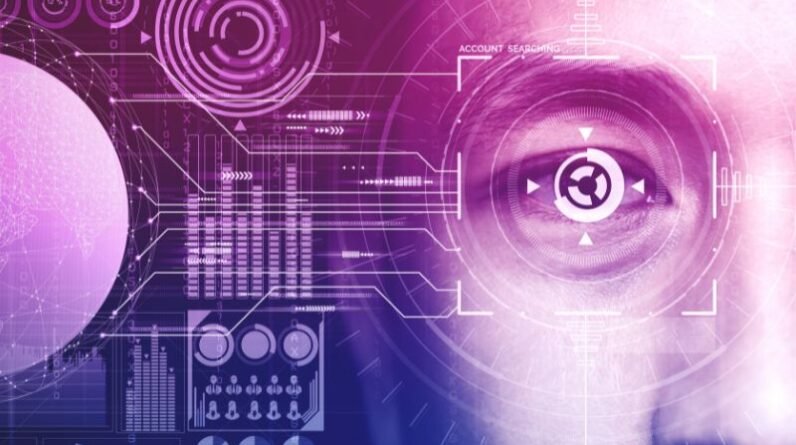
Balancing the scales between security and privacy in the realm of biometrics poses a perplexing predicament. As technology advances, the potential for enhancing security through biometric measures multiplies. However, the shadow of privacy concerns looms large. How can we navigate this intricate landscape where the lines between safeguarding sensitive information and encroaching on personal privacy blur? Let’s explore the intricate interplay between biometric advancements and privacy implications, pondering the possibilities and pitfalls that lie ahead.
Evolution of Biometric Technology
Over the past few decades, biometric technology has undergone rapid development, transforming the process of verifying identity. Progress in biometrics has led to the introduction of more secure and user-friendly identification methods. From traditional fingerprint recognition to advanced techniques like iris scanning and facial recognition, biometric systems have greatly expanded their capabilities. These advancements have not only bolstered security measures but also improved operational efficiency in sectors such as banking, healthcare, and law enforcement.
The evolution of biometric technology has paved the way for innovative applications, including touchless access control and secure mobile payments. As biometrics continue to progress, we can anticipate the emergence of even more effective and trustworthy identity verification methods, shaping the future of authentication.
Risks and Benefits of Biometrics
The widespread adoption of biometric technology in various sectors today comes with potential risks and benefits that must be carefully considered:
– Enhanced Security: Biometric systems offer a higher level of security compared to traditional methods such as passwords.
– Convenience: Users can easily and quickly access devices or facilities without the need to remember passwords or carry physical keys.
– Privacy Concerns: The collection and storage of biometric data raise privacy issues concerning potential misuse or unauthorized access.
– Accuracy: Biometric systems are generally more accurate in verifying an individual’s identity, reducing the risk of unauthorized access.
– Integration Challenges: Implementing biometric technology across different systems and platforms may present challenges and compatibility issues.
Ethical Implications of Biometric Data
Considering the growing use of biometric data in various industries, ethical implications surrounding its collection and management have become a critical focus for stakeholders and policymakers alike. The use of biometric data raises concerns about privacy, consent, and potential misuse. One key ethical consideration is the need for informed consent from individuals before their biometric data is collected and stored. Without proper consent processes in place, there is a risk of infringing upon individuals’ rights and autonomy.
The security of biometric databases is crucial to prevent unauthorized access and potential breaches that could compromise sensitive personal information. Ensuring transparency in how biometric data is used and stored is essential to address ethical concerns and maintain trust in biometric technologies.
Regulatory Framework for Biometric Use
The ethical considerations surrounding biometric data usage necessitate a robust regulatory framework to govern its collection, storage, and utilization. To strike a balance between security and privacy concerns, regulatory bodies must enact policies that safeguard individuals’ rights while allowing for the advancement of biometric technology. Some key aspects of a regulatory framework for biometric use include:
– Clear guidelines on the lawful collection and processing of biometric data.
– Establishment of data retention limits to prevent indefinite storage of sensitive information.
– Requirements for obtaining explicit consent from individuals before collecting their biometric data.
– Implementation of strong security measures to protect biometric databases from breaches.
– Regular audits and assessments to ensure compliance with regulatory standards.
Balancing Security and Privacy in Biometrics
Achieving a harmonious balance between security measures and privacy protections is crucial in the domain of biometric technology. As biometric systems become more common in our daily lives, addressing concerns about data security and individual privacy is essential. Organizations must implement strong security protocols to protect biometric data from cyber threats while also ensuring that individuals’ privacy rights are upheld. Transparency in data collection, storage, and usage is vital to establish trust between users and biometric systems.
Privacy-by-design principles and obtaining explicit consent for biometric data collection can help mitigate privacy risks. By carefully balancing security and privacy considerations, we can leverage the benefits of biometric technology while safeguarding individuals’ rights and data.
Conclusion
The future of biometrics poses a dual challenge of bolstering security measures while also potentially encroaching on privacy boundaries. Striking a harmonious balance between safeguarding sensitive data and upholding individual liberties is crucial as we embrace the advancements in this field. It’s imperative to meticulously consider the intricate nuances of biometric system implementation, given the wide-ranging impact their utilization can have on society.







